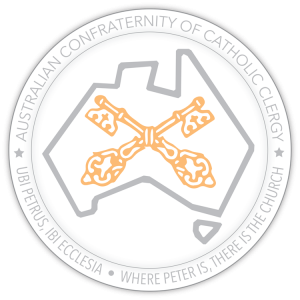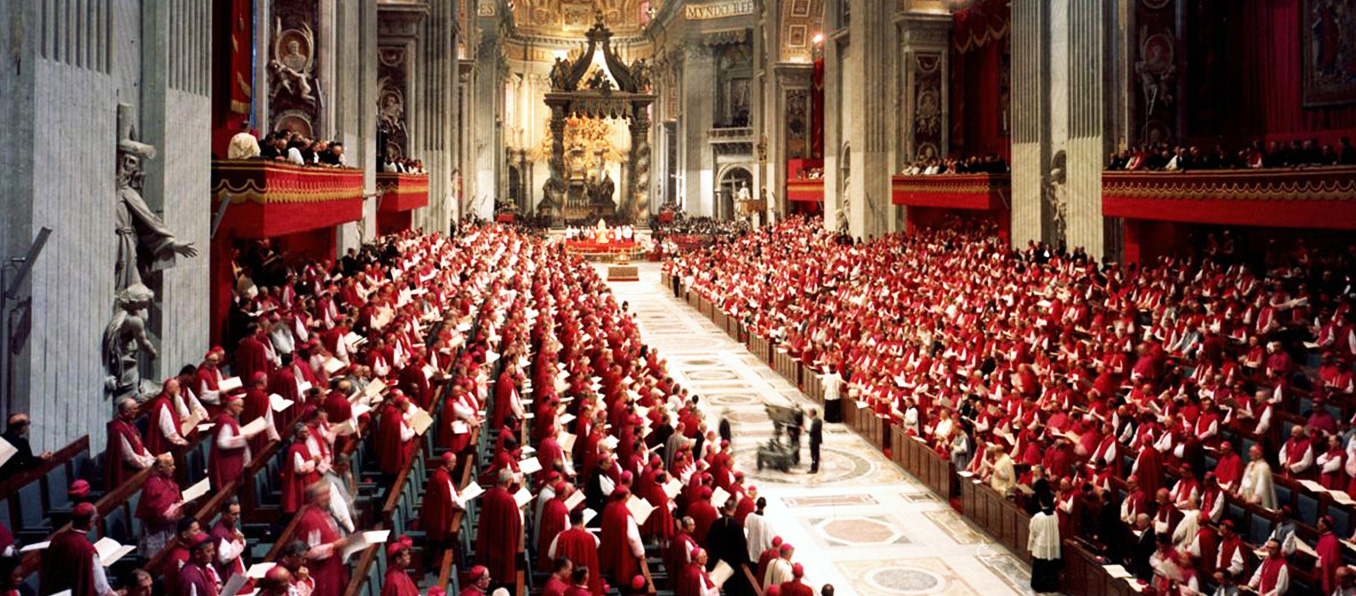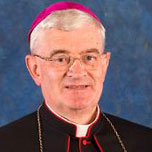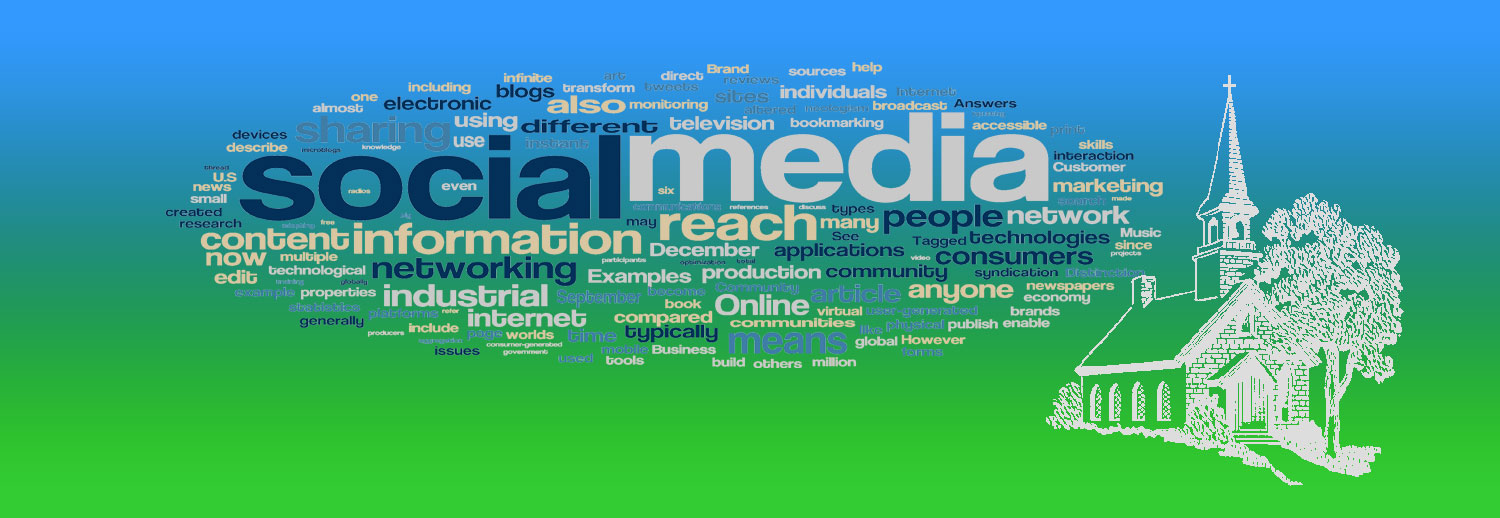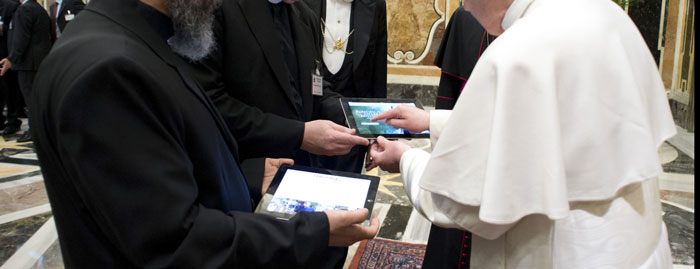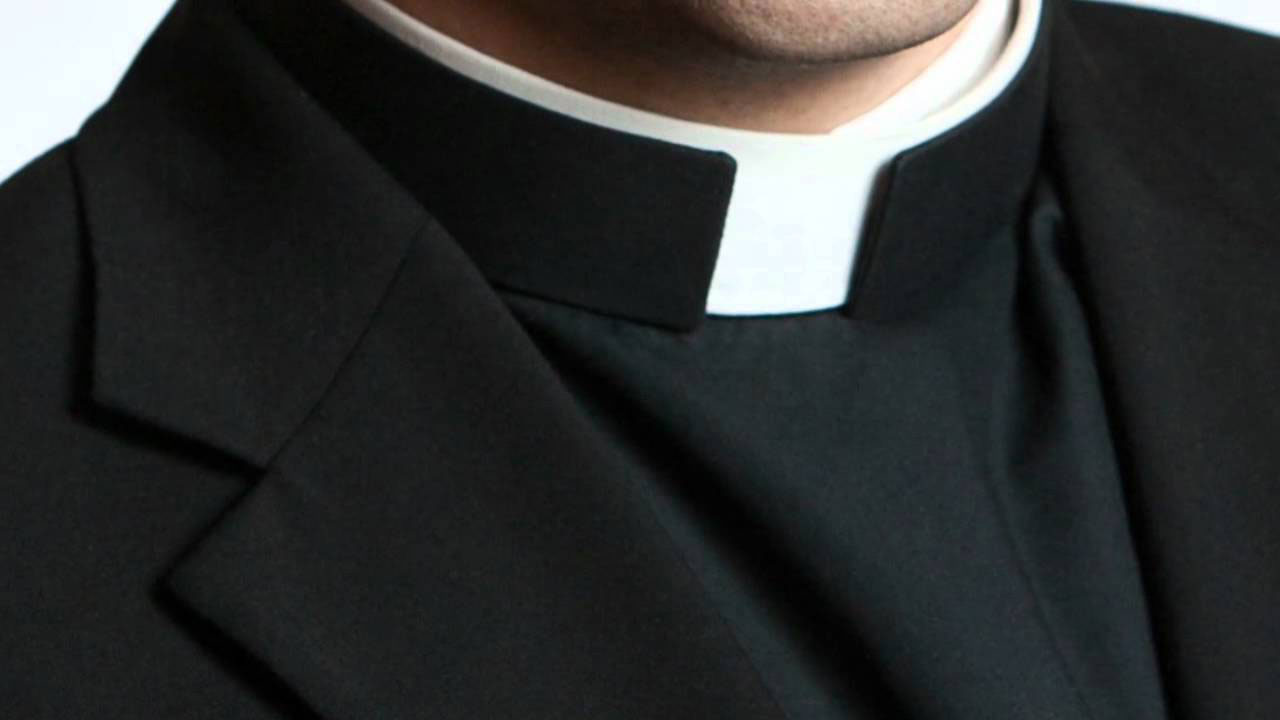The first document of an Ecumenical Council devoted entirely to divine worship was Sacrosanctum Concilium, the Constitution on the Sacred Liturgy (1963). Because people experience the Church primarily through worship, no other document of the Second Vatican Council has had such visible effects on the Church over the past fifty years.
Sacrosanctum Concilium vindicated the liturgical movement of the Roman Rite. S.C. 5-13 reflects the encyclical of Pope Pius XII, Mediator Dei (1947). The Liturgy is the Great Prayer of Christ the High Priest within his Mystical Body on earth and in heaven. The purpose and power of the liturgy is redemptive and salvific (SC 2). Liturgy is where the “work of our redemption” is carried out. Liturgy and Sacraments are thus inseparable – as acts of the worship of God and the sanctification of God’s People.
Fons et Origio
The celebration of the liturgy is the “fount and source” of the life of the Church (SC 10). “Praying the Mass” has been the ideal of the Liturgical Movement for over a century so “full, conscious and active participation” was affirmed in Sacrosanctum Concilium 14. This principle influenced the extensive project for the reform of the liturgy, systematically set out in SC 47-111.
The Fathers required a simplification of rites with better use of the Scriptures in the Mass, the sacraments and the Divine Office. The door was opened to the vernacular and to cultural adaptations, as requested by bishops working in non-Western cultures, at that time called “the missions.”
Liturgy is derived from creation and ordered towards the redemption of the created world, even of time itself. Sunday, the “day of the Lord’s Resurrection”, predominates as directed by the Council Fathers in SC 106. However, in Chapter VI on Sacred Music and Chapter VII on Sacred Art, the Council Fathers were also concerned that liturgy be noble and beautiful. Later, in the General Instruction of the Roman Missal and in the revised Ceremonial of Bishops, this was interpreted as “noble simplicity.”
How Sacrosanctum Concilium was applied
The reform was entrusted to a council of bishops and experts under the Sacred Congregation of Rites, as it was then called. Before the Fathers departed from Rome in 1965 the first “changes” were evident. But with positive developments something soon went wrong. I offer an interpretation of the problems involved in implementing Sacrosanctum Concilium.
The ambience of Western cultural and political change in the 60s and 70s was not ideal for liturgical reform. Secularization and a revolutionary break with the past brought about what I would describe as a rupture between liturgical act and sacramental mystery, between the external signs and the sacred reality contained. Stripped of mystery, the external signs predominated and were seen as available for experiment or to be used for ideological purpose. The resulting “loss of the sacred” was called desacralisation. Such a secularizing trend mingled with an over-reaction to the complex pre-concliar Latin liturgy, rich and beautiful but vulnerable to those determined to destroy because it was so often celebrated badly and with little pastoral sense or appreciation.
However, this was largely a Western problem. Catholics in non-Western societies do not complain so much about difficulties some people in the West encountered in the post-conciliar liturgical reform. That cultural contrast is instructive. For the historian, it suggests another working hypothesis, that the problems we encounter with worship stem from what has molded Western culture and pluralist societies over the past three centuries, the Enlightenment.
Influence of ‘The Enlightenment’
A destructive flaw in the Enlightenment was misunderstanding the human person, through a denial of original sin and innate human weakness. The human person must take control and resolve all things. This was combined with a confident faith in progress, that science, education, health and hygiene solve everything. Much faith was placed in reason, with a corresponding fixation on communication and forming correct opinions.
That approach was applied in massive social and political projects over the past two centuries and many of these were disasters. But it also failed when applied to the subtle task of reshaping Christian worship in the post-conciliar Church. Change was imposed from the top, planned by experts, controlled and applied by decree, but not always explained well or understood. At the same time, too much was expected of priests and people. All priests are not skilled liturgists, and most Catholics are not interested in liturgical minutiae.
The culture of the Enlightenment had already produced a rationalist reform of worship at the condemned Synod of Pistoia (1786). But a kind of rationalism had taken root earlier in the radical Reformation traditions, with their over-emphasis on worship as instruction in the Word. Nevertheless it is not true to say that Protestantism guided late twentieth century Catholic liturgical changes, as some traditionalists argue. I believe the Enlightenment effect in society was the source of how the liturgical movement went off track after the Council. Instruction, comprehension and simplification are reasonable goals, endorsed by Sacrosanctum Concilium, but these goals came to dominate the post-conciliar reforms, with ugly and destructive effects.
The reform of Catholic worship was subject to another Enlightenment weakness – following the “spirit of the age”, that is, mid-twentieth century “modernity”. Elsewhere I have described the worst effects of subjecting liturgy to that spirit as seven “plagues”: didacticism, secularization, modernism, the banal, theatricality, the sensual and a communal narcissism. There is no need to dwell on these lingering but fading problems, better analyzed in the Ratzinger/Pope Benedict XVI critique of regrettable liturgical changes.
A final comment on the application of Sacrosanctum Concilium: while the reform authorized by the Council document applied only to Catholics of the Roman Rite (SC 3), the Eastern Churches were influenced, for example by the wider use of the vernacular. But reform also fostered a new wave of “Latinization” in some of these Churches, a tendency Rome has repeatedly warned against. Maronites who celebrate Mass “facing the people” seem to forget that the Syrian liturgies always maintain “orientation” and they ignore a 1997 directive of the Congregation for Oriental Churches which included the case for orientation.
The fruits of Sacrosanctum Concilium
The phase of experimentation or anarchy has mainly passed. Vernacular texts are now under revision, with English leading the way. The “reform of the reform” that began moderately under Blessed John Paul II moved forward with the “pax liturgica” of Benedict XVI. The revised General Instruction of the Roman Missal and the 2002 edition of the Missale Romanum have helped. The revised General Instruction reins in abuses and is more precise than the previous editions. If only priests would read it! We now have an official Australian text of GIRM.
To deepen a vision of liturgy, priests should also read the text of Sacrosanctum Concilium. Developing the finest human dimension of worship is part of any priest’s liturgical ministry. We help our people come closer to the God who is Beautiful. Our worship should exemplify a quality that speaks of God and a mystery that draws us into the Divine Presence and Action. We must avoid anything cheap, trite or vulgar in our worship, while respecting matters of taste, especially the popular devotions that reflect the multi-ethnic nature of the Catholic Church (SC 13).
Various interest groups have emerged in recent years to encourage and assist priests. These reveal a “reform of the reform” broadly understood from different perspectives: the Association for Catholic Liturgy, the new Mundelein liturgical institute in Chicago, the Church Music Association, Adoremus, CIEL. That list covers quite a spectrum. It includes dialogue with liberal liturgists right through to a liturgical movement within the framework of the extraordinary form of the Mass. At the same time, in the spirit of a “new liturgical movement”, architects, artists and action groups are working for better church buildings, including the repair of Philistine church “renovations.” This is now evident in Australia.
Participatio actuosa
One sign of hope is a more subtle or spiritual understanding of the principle of “full, conscious and active participation”. No longer is this reduced to the level of everyone doing the same thing at the same time, or saying or singing the same thing, or thinking the same thoughts. We now hear liturgists discussing how one can participate actively through watching, or listening to a motet, or simply by “being there”. This is no longer dismissed as “passive” participation.
Returning to the Age of the Fathers?
Attention has also been focused on an academic ideal that guided those who framed Sacrosanctum Concilium. They wanted to return to ancient traditions, moving from a medieval or “Tridentine” liturgy back to what they imagined to be a pristine style of worship, some classical Roman Rite of the “age of the fathers”. In Mediator Dei, Pope Pius XII had warned about taking this too far by descending into liturgical “archaeologism” which would ignore liturgical development. As it turned out that did not emerge as the problem.
Leading figures in the liturgical movement were sincere scholars. Some worked in a monastic ambience, which is reflected in various elements of the post-conciliar reform, for example, the pastorally questionable three readings for Mass on Sundays and Solemnities. But, as I have indicated, the real problems set in as a secularized culture undermined their ideals in ways that distressed scholars like Louis Bouyer and Josef Jungman.
The academic ideal of a noble “patristic” style of worship crumbled once “relevance” distorted the Sacrosanctum Concilium project. This involved a rupture with the whole Roman liturgical tradition. In the name of being “contemporary”, “meaningful” or “pastoral”, in many places there was little respect for traditions or continuity.
In the Anglophone world an early example of rupture was the flat, inaccurate, but so “modern”, translation of the old ICEL. Thankfully we now enjoy the fruit of Vox Clara with new ICEL texts, richer, somewhat “Latinate”, but certainly more sacred in tone. They reveal the Latin missal’s symbolic and poetic imagery, drawn from Scripture and Tradition but bleached out in the former translation. The new translation is also faithful to the foundational principles of Sacrosanctum Concilium. Latin remains the sacral language of our Rite (SC 36), but good vernacular texts were needed and are finally with us.
Shaping the Sacramental Rites
However, I believe a clearer shaping of sacramental rites was the finest element in the Sacrosanctum Concilium project. The revised rites of Baptism, Confirmation, Marriage and Anointing of the Sick are much better than former rites. The rites for Holy Orders now clearly tell us how this sacrament is conferred, in line with the ruling on matter and form of Pius XII in 1947. The rites for Penance need to be modified in pastoral practice. The funeral rites are good, that is, as long as they are not “adapted” too much. But the Book of Blessings is a verbose disaster and should be redrafted. However there are still problems with the central moment of Catholic life, the celebration of the Mass. Today these problems are being discussed across the spectrum of liturgical views and theories.
As the author of Ceremonies of the Modern Roman Rite, I support the liturgy mandated by Sacrosanctum Concilium. Because it is often badly celebrated, I wrote the book and its sequel, Ceremonies of the Liturgical Year. There are many churches where the post-conciliar rites for Mass and sacraments are celebrated graciously and prayerfully, with taste, style and good music, even as there are churches where the liturgy is still crass or dreary. After fifty years much needs to be done to implement Sacrosanctum Concilium properly.
Unfinished projects
One unfinished project is chapter IV of Sacrosanctum Concilium. The Council Fathers envisaged a Liturgy of the Hours and a workable breviary appeared, a moderate reform if one studies more radical proposals made over past centuries. The Liturgy of the Hours is a normal part of a priest’s daily prayer life, timed, if possible to be celebrated at the appropriate hours. As the Council Fathers hoped, in some parishes and other communities the people join the clergy in public celebrations of the Liturgy of the Hours. We need to explore ways of taking this forward, for example, by choosing to celebrate sung Vespers for special occasions rather than putting on “a special Mass” in schools where the practising rate of families is minimal.
However, the greatest unfinished project is music: chapter VI of Sacrosanctum Concilium. Liturgical music is a major area crying out for enrichment – and a severe reform. There is no need to dwell on the junk music or sacro-pop that afflicts so many parishes and schools. But there are signs of improvement. Good composers are working in Europe and in English-speaking countries, the latter encouraged by the new ICEL missal. But composers, choir directors, singers and musicians need the financial patronage of the Church to continue their work. Priests should be more generous and sensitive in recognizing this practical need and not exploit the talents of gifted men and women.
Yet the challenge remains, to find better music that is truly liturgical for choir and congregation. In Australia the preparation of a new Catholic Worship Book II will be another fruit of Sacrosanctum Concilium, the most influential document of a great Council of the Church.
